The toner specifications that are produced are as diverse as the range of applications and colours. This is because toner customers have very different, individual needs in terms of colour and quantity.
Toners are powder mixtures of synthetic resin, pigments, electrifiable metal oxides and auxiliary substances. And due to their special fineness, they are not entirely harmless to health. Here we present a big bag system for mixing and filling the difficult-to-handle basic materials. Fully automated for ” on-demand” toner production.
The aim of the toner manufacturer is to produce the different toner specifications quickly and cost-effectively and for a wide colour spectrum. Consistently high quality of the customised toners requires absolute consistency and precision in production when dosing and weighing out the individual components. The required safety standards also have high priority because of the explosive toner mixture. Demanding requirements that are placed on the plant engineering here. The system solution, which was designed and built by Engelsmann and put into operation six months later, was also demanding.
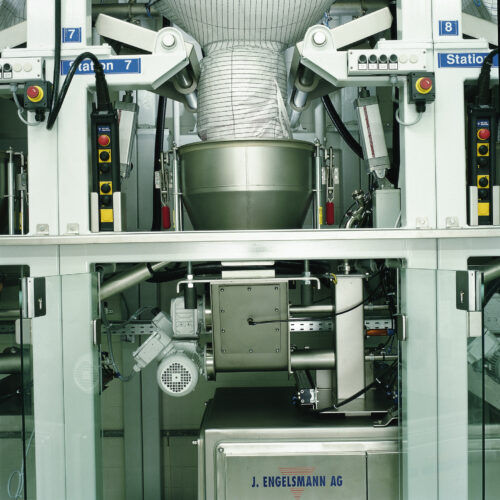
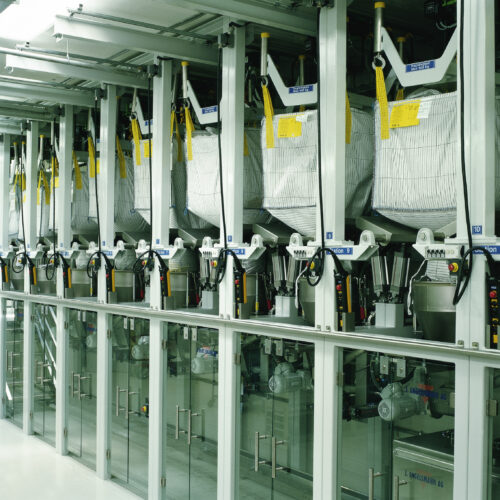
Components of the filling plant: Ten big bag emptying stations with double dosing screws, aspiration system for dedusting, control electronics with recipe input, trolley with weighing system and a drum hoop mixer for homogenising the colour components.
Complete process coverage:
Automated and individual
Equipped with ten big bag emptying stations, the Engelsmann system covers all process steps from mixing the colour to filling the ready-to-sell packagings.
The system enables the production of custom-dyed toners with high accuracy and consistent colour throughout – within the shortest possible time.
Each of the ten big bag emptying stations has its own chain hoist to pick up the big bags. The discharge spout of the big bag brought in is connected to the discharge hopper in a dust-tight manner. Each hopper is equipped with a double metering screw for coarse and fine flow metering. The individual colours are collected recipe-controlled from a mobile scale, on which a drum is placed, directly at the big bag emptying stations.
At each station, the drum is automatically connected to the outlet of the dosing screw in a dust-tight manner and the dosing process is started. It ends when the specified weight is reached. To prevent toner from trickling out, the screw outlets are closed pneumatically. After the individual inks have been metered into the barrel, a highly efficient but gentle mixing process takes place in a Rhön wheel mixer. After a preset mixing time, the barrel is removed and the ink is filled into the appropriate sales containers.
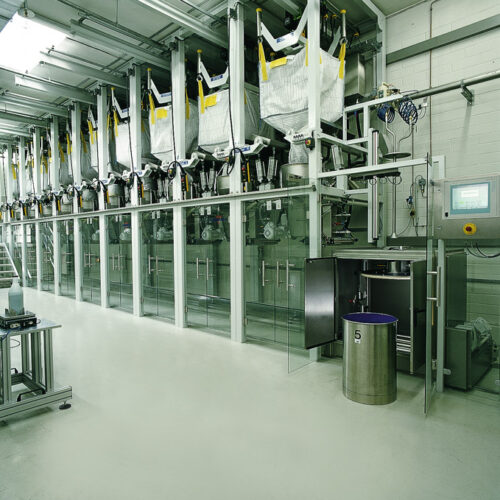
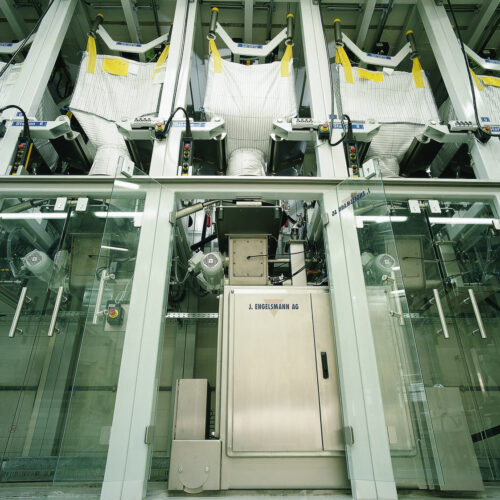
Safety first
In terms of safety, the Engelsmann engineers developed a concept based on the specified ATEX zones
An intelligent connection system for different big bags brings additional time and cost savings.
In addition to the installation of sophisticated control electronics that enable a redundant design of all mechanical functions, other features ensure compliance with high safety standards: the confusion-proof operation of the system, smooth surfaces or the dust-tight design.
In particular, the dust-tight connection of the big bags to the emptying stations is an important safety factor to protect people and the plant environment from the fine particles of the toner mixture. A task that was previously difficult and, above all, time-consuming due to the use of different big bag sizes. The big bags used are equipped with discharge spouts of different lengths. The result was a lot of manual effort until the big bags were connected to the emptying hoppers.
Economical docking requires operationally reliable and user-friendly solutions that are adaptable. With JEL SafeConnect, Engelsmann engineers have developed a connection system that quickly and dust-tightly connects commercially available big bags with different lengths and diameters of inlet and outlet spouts (250 to 400 mm). This avoids time-consuming adjustments. A problem-free connection is possible within a tolerance of 50 mm.
Furthermore, the use of the JEL SafeConnect system can avoid costly refitting work if, for example, a new customer requires big bags with a larger diameter of the inlet spout and the manufacturer would have to refit the filling head of his filling unit for this. With the use of JEL SafeConnect, tolerances in the diameter of the inlet and outlet spouts can be compensated for, so that different customer requirements can be met without costly adjustments to the filling unit.
The low overall height of the JEL SafeConnect system can save effort and costs, especially when used in areas with confined spaces, for example when a big bag emptying station has to be moved to another installation location with a lower room height. As an alternative to a costly shortening of the complete emptying unit, the use of the JEL SafeConnect system is the far more economical solution.
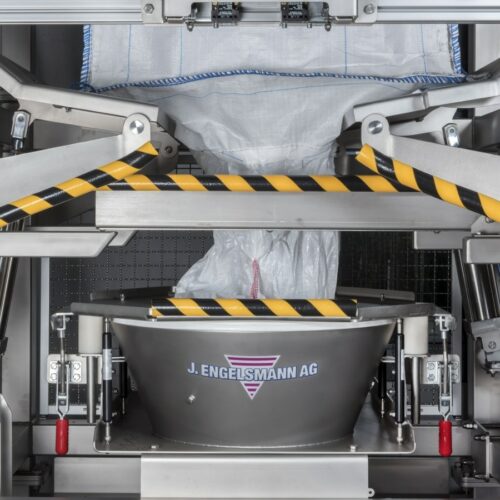
Option 1:
Dust-tight discharge hopper (here as variant with hand levers)
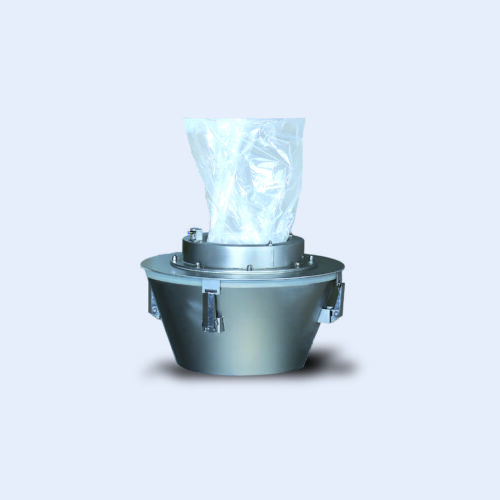
Option 2
JEL SafeConnect with pneumatic seal
Engelsmann offers various options for connecting the Big Bag outlet to the emptying system safely.
With the dust-tight discharge hopper, the discharge spout is placed centrally over a product guide tube and the hopper is closed dust-tight with gas struts or pneumatically with a cover.
With JEL SafeConnect, the nozzle of the big bag is put around a flexible adapter ring, inserted into the housing of the JEL SafeConnect connection and attached to it. The supply of compressed air expands the integrated, pneumatic seal and thus fixes the Big Bag nozzle. An additionally available suction device and shut-off valve prevents contamination of the environment and protects the operator from possible hazards thanks to appropriate control technology.
To avoid the great manual effort when connecting the different big bags to the discharge hoppers, the toner manufacturer decided to use the JEL SafeConnect system in this filling line as well. This enabled him to significantly shorten the set-up times when changing big bags and to increase the productivity of the plant.

